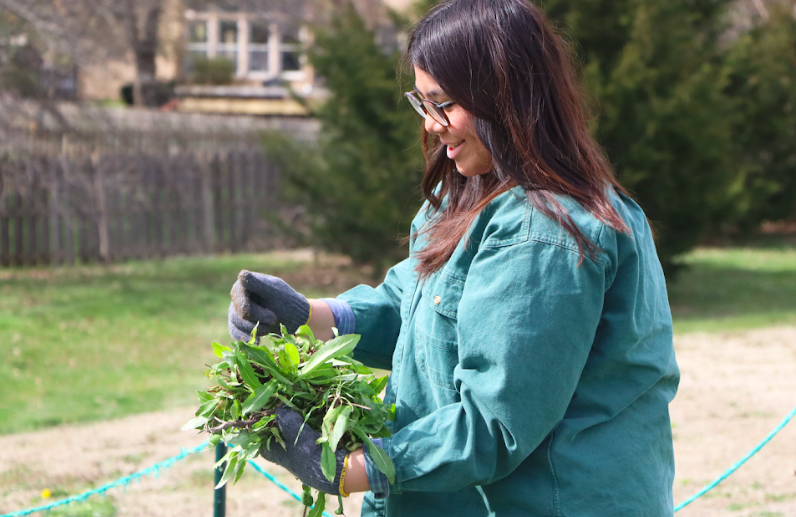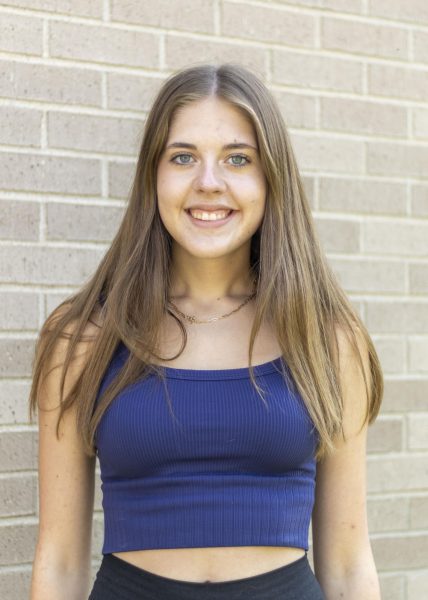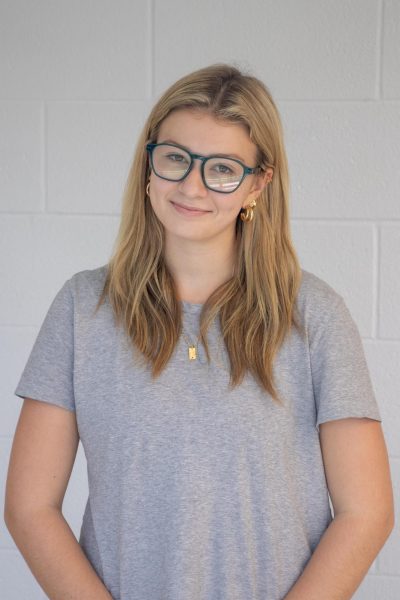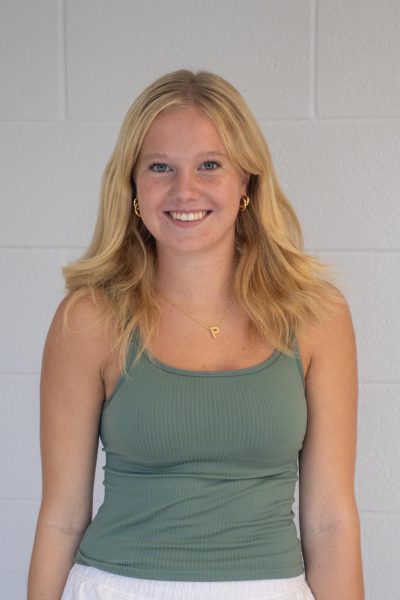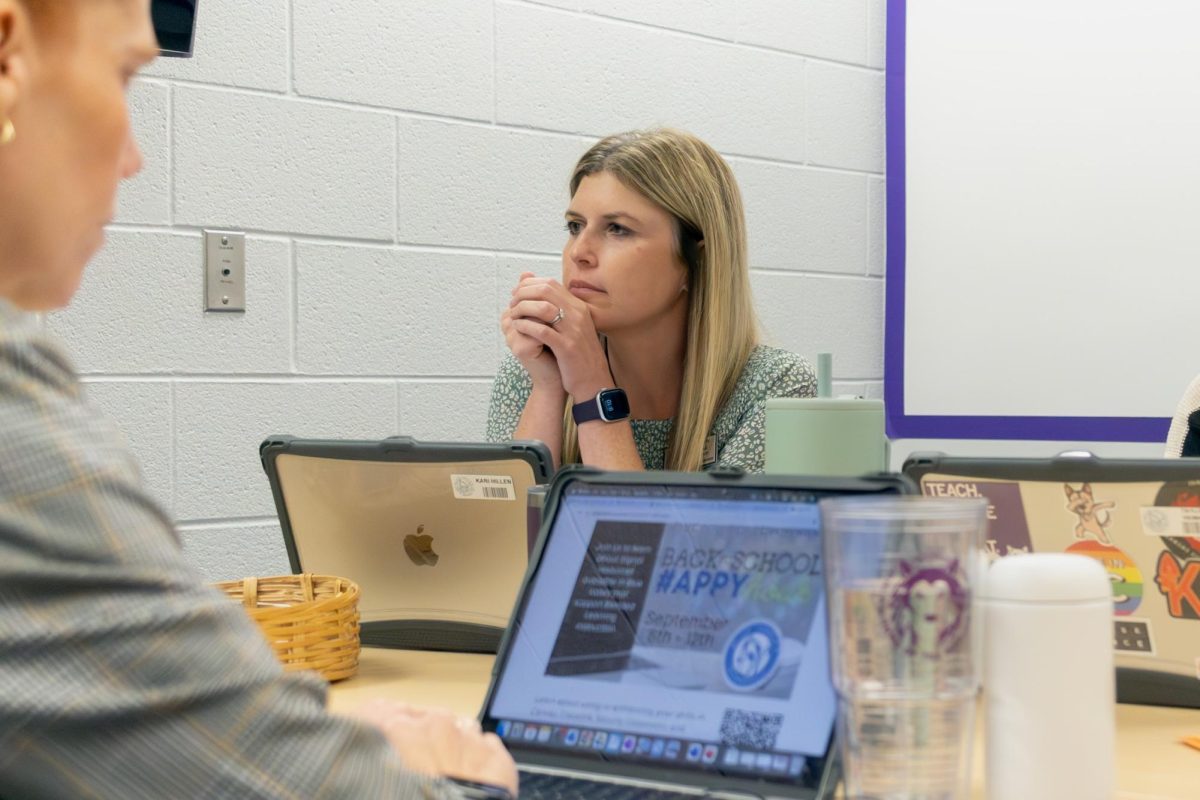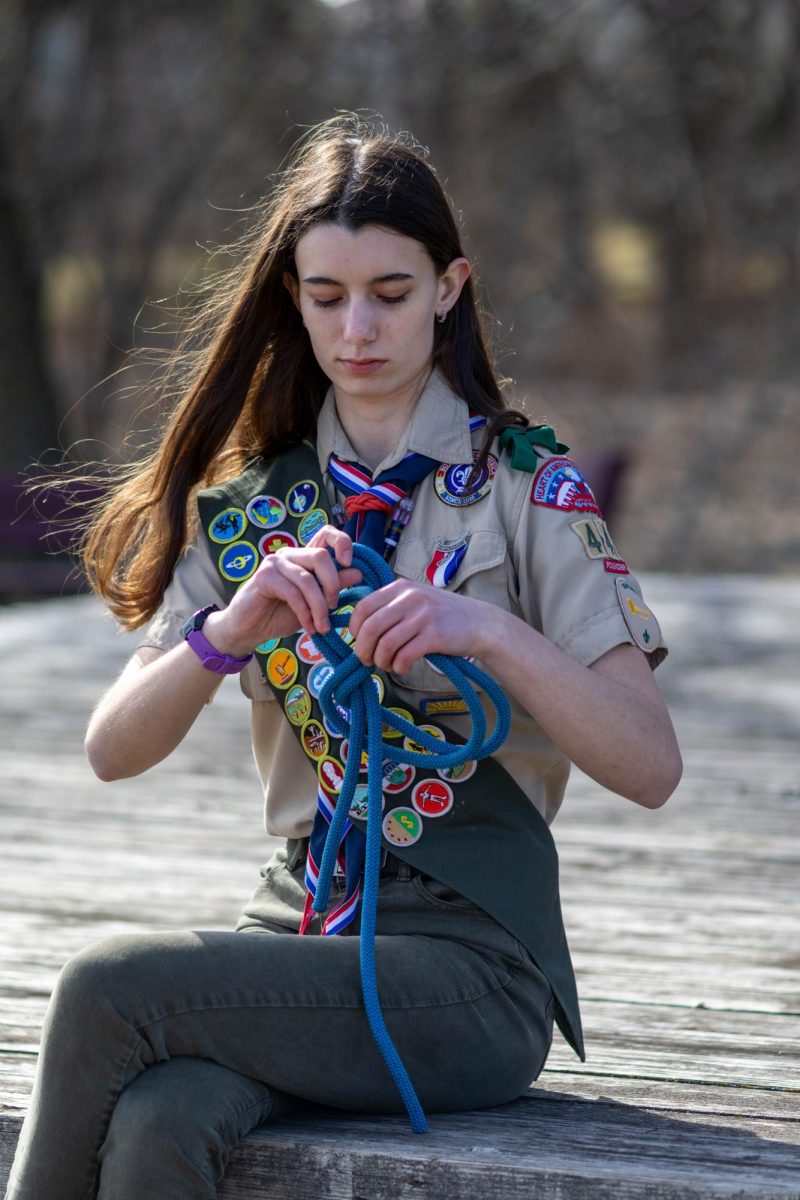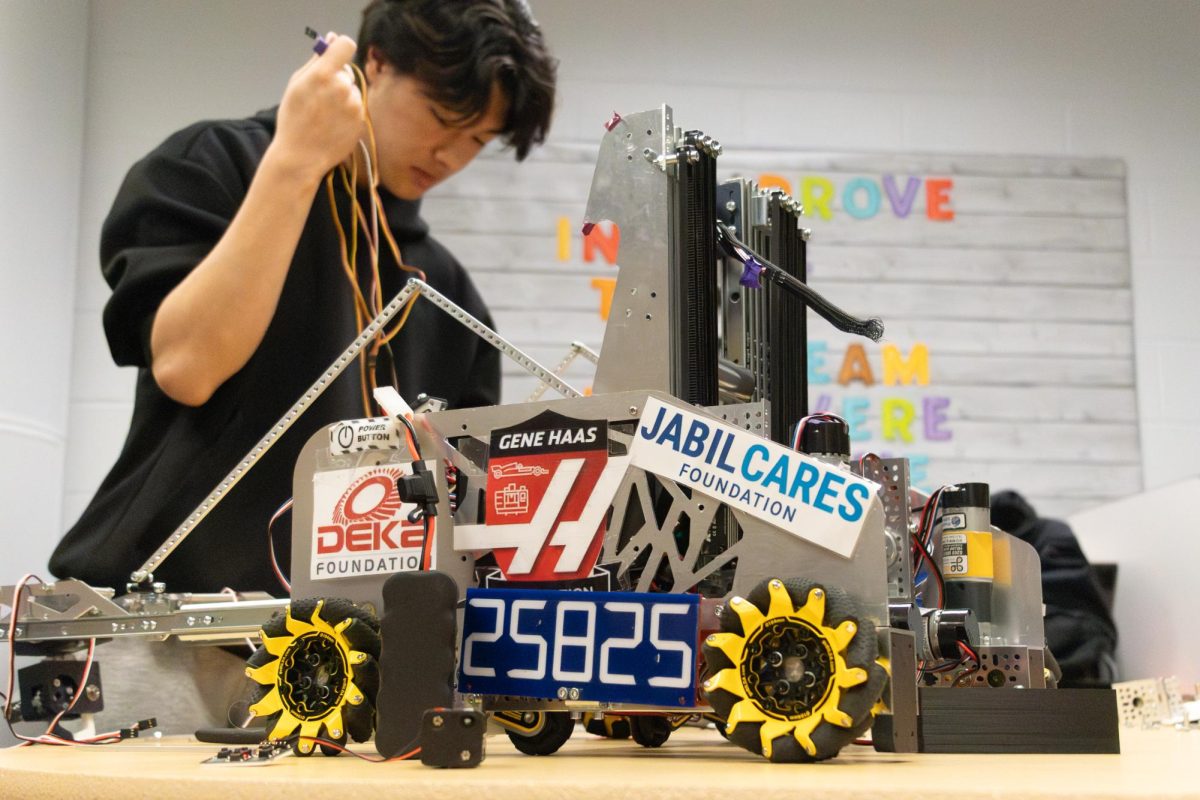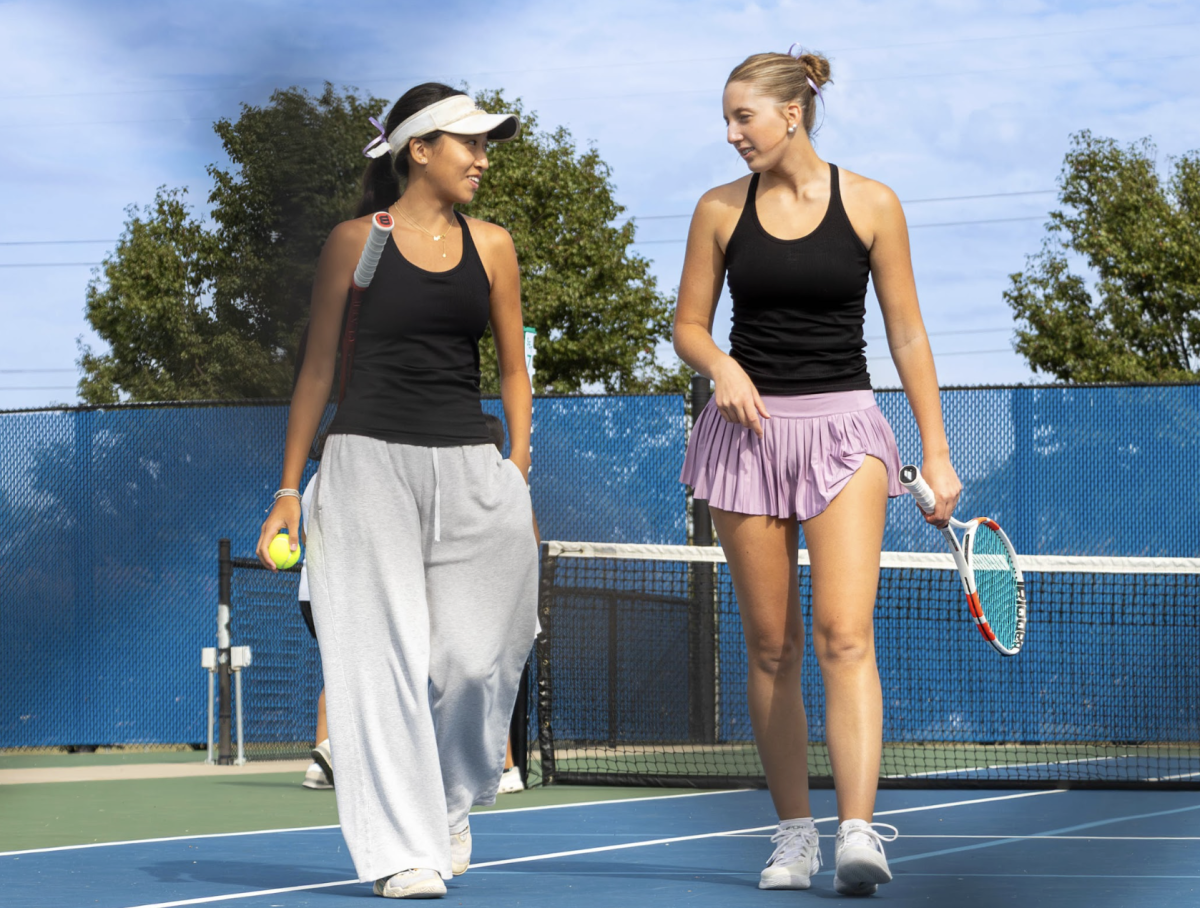Every other week during the school year, a group of students at Northwest meet up and spend their Wednesday afternoons pulling weeds, planting seeds, and planning for the future of their outdoor project. These students are part of the Environmental Club, and they are working toward the restoration and improvement of the prairie located on school property.
Junior Juliet Nguyen, president of the Environmental Club, said that they attempted to start the project before the pandemic and have been working on it consistently since 2021. The native plants that inhabit the prairie will utilize extra water that has collected pollutants and chemicals and filter it through their roots. This prevents the wastewater from being sent into storm drains and promotes pollination in the prairie.
“On a community level, [it’s] helping with the environment,” Nguyen said. “Wastewater trails down to the prairie and all the native plants there absorb it.
Outside of the prairie, the club is involved in volunteer work at various organizations such as The Overland Park Arboretum and the Blue Valley Wilderness Science Center.
When describing the group’s goals with these projects, Nguyen they are trying to raise awareness about mindful consumption and preservation of the planet. She said climate change is a massive problem facing the younger generations.
“It is a pressing issue, and I think that a lot of people undermine it,” Nguyen said. “The Earth is in our hands and we kind of have a responsibility to keep it safe.”
According to an unscientific poll conducted by The Express over Instagram, 84% of the 167 participating Northwest students believe that climate change is a problem. Despite this consensus, junior Divya Subramoni said she still sees a lot of waste happening in the community and doesn’t think teenagers understand the severity of the issue.
“I just wish people knew how bad it’s getting and the dire status of climate change,” Subramoni said. “The first part of combating is understanding it’s an issue.”
Linda Streiby, a science teacher at Northwest said it is important that students are educated about the definition of climate change when discussing it, specifically how climate is different from weather.
“People sometimes confuse weather and climate,” Streiby said. “Weather is the day-to-day conditions in a certain area where climate is an average of the day-to-day weather.”
Strieby also said that climate change presents threats to the planet and increases the likelihood of disastrous weather events.
“Hurricanes become more intense because the temperature of the oceans is higher. Some places are getting too much precipitation and there’s flooding, other places that are not getting enough and there’s droughts,” Strieby said. “It changes the weather patterns to more extreme limits.”
In attempts to combat these threats, Subramoni said she does her best to live a sustainable lifestyle. To achieve this, she said she is mindful of her consumption and is a vegetarian.
“I use reusable water bottles and I try to recycle plastic,” Subramoni said. “I try not to waste water because it pains me when people waste water.”
Like Subramoni, Nguyen said she tries to eco-conscious decisions daily, especially when it comes to what she purchases.
“I shop sustainably whenever I can, I try not to overconsume things,” Nguyen said. “It’s the smaller things, especially just reusing the things that you already own is a really big part of it.”
Even though Subramoni still makes individual efforts, she said it is difficult to combat such massive challenges on a small scale and corporations need to change for progress to be made.
“I think it’s really in the big companies,” Subramoni said. “My personal changes can help but it really has to happen on a larger scale than just individuals making daily lifestyle changes.”
Similarly, Nguyen said that big companies are largely at fault for climate change, but individuals still have a responsibility to educate themselves on the topic.
“It’s not in our hands to fix massive corporations and stuff, but I do think we have to have a sense of empathy and community when it comes to the environment,” Nguyen said.
As a district, Blue Valley has been making efforts to become collectively more sustainable. According to Jake Slobodnik, the Executive Director of Operations for the Blue Valley School District, it was one of the first K-12 districts in the nation to receive a first-place Green Cleaning Award for Schools and Universities in 2014. He said this is based on construction materials, cleaning materials and the district’s practices. Additionally, Slobodnik said the district was the first in the United States to receive the Model of Sustained Excellence award in 2006 for indoor air quality sustainability practices.
In order to receive these awards, Slobodnik said the district uses many sustainable materials for cleaning. He said this includes Tersano water—a cleaning solution made entirely from water and oxygen— recycled paper products, biodegradable gloves and a floor cleaner consisting of a 99% dry solution and recycled paper compound.
Additionally, Slobodnik said the school buildings are built using environmentally friendly materials.
“If you walk around your building, the flooring that you’ll see primarily is polished concrete. That’s very intentional,” Slobodnik said. “It’ll last as long as the building will last and it’s cleaned as sustainably as we can.”
Furthermore, Slobodnik said the roofs of the buildings are a light-colored material to reduce heat island effect. Heat island effect is defined as urbanized areas that have higher temperatures due to buildings, roads and other infrastructure by the U.S. Environmental Protection Agency.
While the district does not have a district-wide recycling program, Slobodnik said, recycling still takes place.
“We leave that up to the buildings because we get a lot of requests from programs within the buildings that are looking to have their own recycling program as a kind of educational opportunity for students,” he said. “We do have recycling on our district office campus that we manage as a district.”
Recycling at Northwest is conducted by KAY Club. President-elect Megana Aedma for the 2024-2025 school year said members receive one hour of community service each Thursday if they participate in collecting recycling from each classroom. Aedma said this program not only allows the school to support the environment but it also encourages members to recycle in their own lives.
In order to help the environment, Aedma said the community must work together.
“We need a lot of people to help because it isn’t possible to do everything by yourself, like helping an entire community single-handedly,” Aedma said. “So I think it’s good that [KAY Club] gathers a bunch of people together to do that.”
Despite community efforts, Nguyen said there is still room for improvement at Northwest.
“I think we can make a higher effort to promote recycling,” Nguyen said. “[Recycling is] not in our lunch rooms, and like the commons, the atrium where [it] could definitely be beneficial.”
Nguyen also said that communication with students about issues regarding climate change could be improved.
“I don’t know if we talk so much about like, current issues that could affect us,” Nguyen said.
Similarly, Strieby said that the school could do a better job at incorporating environmental education into subjects besides science courses. Expanding on this, she said that English and social studies classes could benefit from research projects about the climate or what is being done in their community.
“I think there’s just a lot of opportunity for environmental club to, you know, educate students and like I said, people in the community,” Strieby said.
The Blue Valley School District as a whole is working on community improvements still moving forward. Slobodnik said the district is looking into new ways to help the environment including charging stations for electric cars and solar power for schools.
“We’re designing our new middle school and we’re looking at the opportunity to put solar on that building that will power at least 50 percent of the building if not 100 percent of the building,” Slobodnik said. “That would be our first project that is solar powered and it would be the model for implementing that at other schools as well.”
Slobodnik said that in order to improve the environment, the community must collectively practice sustainability.
“We only get one chance at sustaining the Earth that we live on,” Slobodnik said. “It’s something we should all be doing and something that we should all practice in our every day.”


